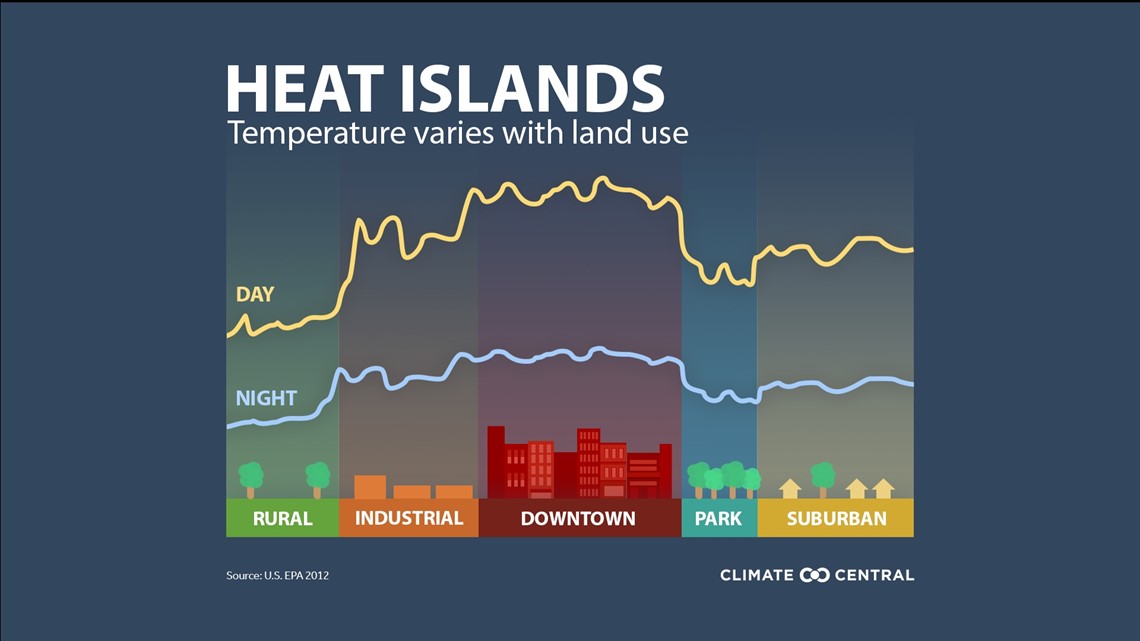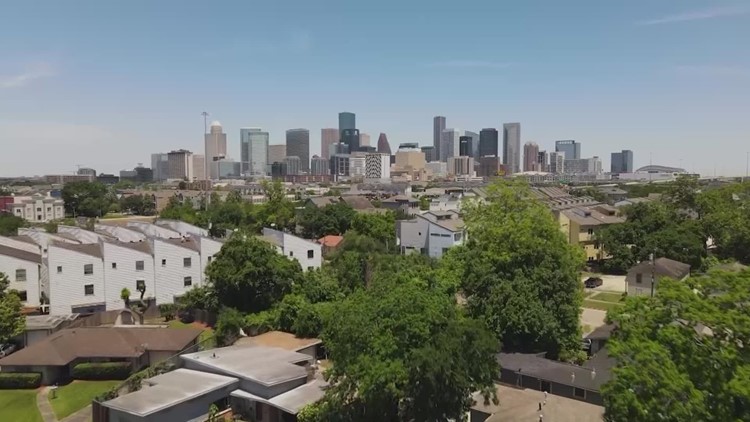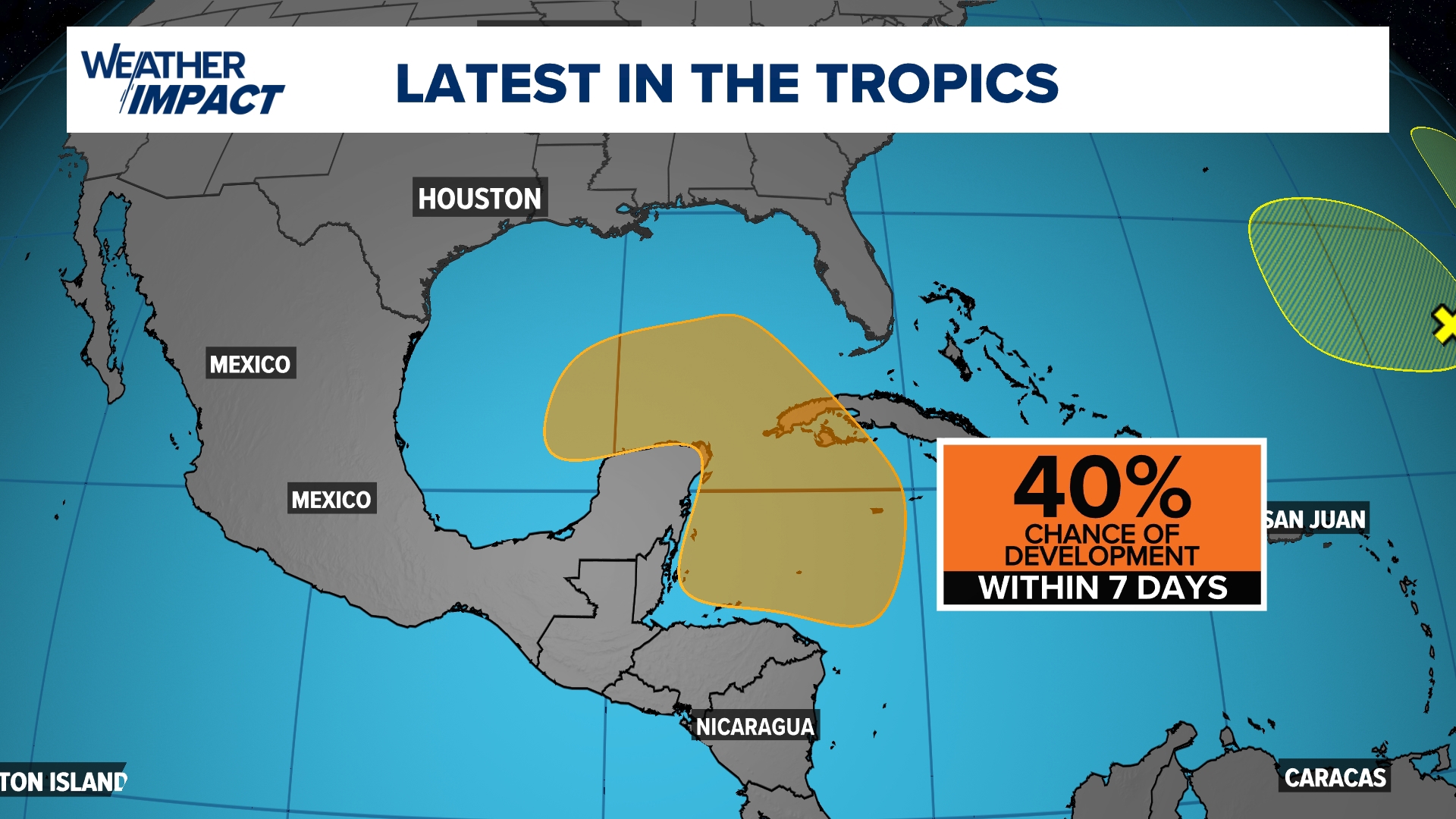HOUSTON — Houston's summers can be as you know, very hot and humid.
However, summertime temperatures within the city itself are commonly hotter than locations outside the Beltway.
It's true. The built-up nature of a city like Houston with its buildings, paved surfaces, and extensive interstate systems work to capture, hold, and radiate heat. This is known as the Urban Heat Island Effect.
It's well documented that the city of Houston is a prime example of this phenomenon and it's exacerbating the ongoing heat wave, especially at night.
What is the Heat Island Effect and what causes it?
You’ve got a lot of high-rise concrete buildings, roads, sidewalks, and impermeable surfaces, that absorb and store heat and can keep the surrounding area warmer for longer.
At night when temperatures typically 'cool off,' the heat captured by the concrete radiates resulting in hotter temperature readings within the city, sometimes significantly hotter than those measured in rural areas. We are talking 5 to 8 degrees warmer than what you’d find outside of other areas.


What is the solution to Heat Island Effect?
Fortunately, there is a simple solution! Make more green space!
Planting trees to provide shade preventing paved surfaces from heating up can have a monumental impact on the effect of the Urban Heat Island.
In fact, hundreds of buildings across the country have now begun transforming the tops of their buildings to green space to try and mitigate growing issues. Another unique way to lessen to the effect of the Urban Heat Island is painting paved surfaces a more reflective color like white that will conduct less heat.
Follow the KHOU 11 Weather Team for updates:



